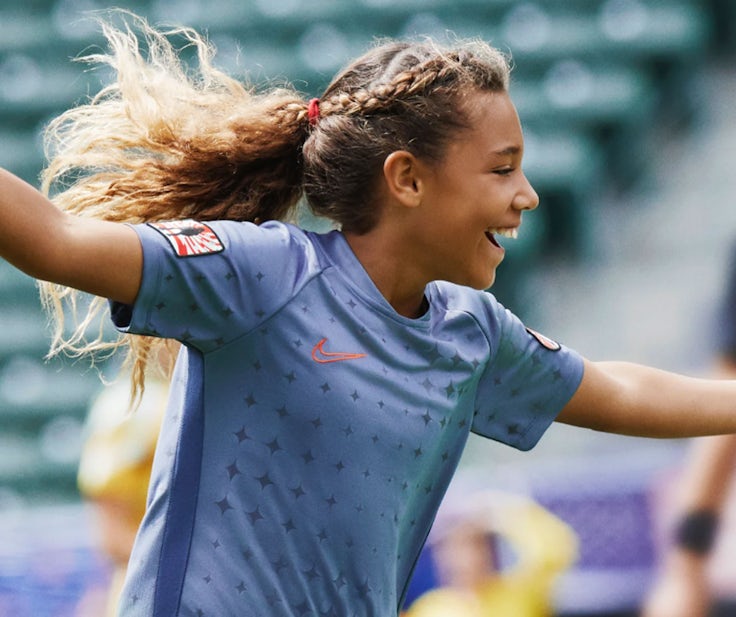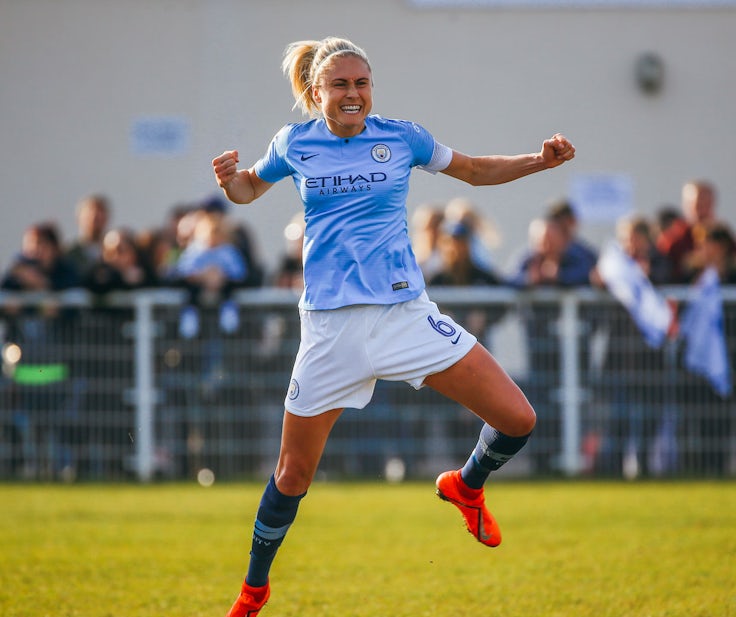Nike is the big brand winner at the Women’s World Cup
As England’s Lionesses make history by getting to the semi-finals for the second World Cup in a row, Marketing Week reveals the big brand winners of this year’s tournament.
Nike is the clear brand winner of this year’s Women’s World Cup, according to exclusive data shared with Marketing Week, with Twitter, Lucozade and Budweiser also scoring well among consumers.
When it comes to emotional engagement – a good indication of the long-term impact an ad will have – Nike’s ‘Dream Further’ campaign, comes out on top with a near perfect score of 4.6 out of five.
As a result, the ad, which features some of the biggest names in women’s football alongside the message ‘Don’t change your dreams. Change the world’, is expected to drive long-term returns, according to System1, which carried out the research.
“The star rating is a predictor of long-term brand impact – three is a strong score, four is excellent and 5 is exceptional, although fewer than 1% of ads manage this,” explains Jill Schaefer, associate research director at System1 London. “For long-term impact the crucial factor is the type and degree of emotional response – strongly positive reactions create and reinforce positive memory structures around the brand.”
Clearly media spend also has a role to play and impact will depend on what else is happening in the market, but based on these campaigns “Nike will see an excellent long-term return and continued share gain, and Lucozade and Budweiser should also do well”.
 After Nike, the next best performing campaign in the UK is Twitter’s ‘Women in football’ with a score of 3.9. This is followed by Lucozade’s ‘Lionneses’ (3.7), Budweiser’s ‘Heart of a King’ and Qatar Airways’ ‘Qatar Airways’ newest destination’ (both on 3.5).
After Nike, the next best performing campaign in the UK is Twitter’s ‘Women in football’ with a score of 3.9. This is followed by Lucozade’s ‘Lionneses’ (3.7), Budweiser’s ‘Heart of a King’ and Qatar Airways’ ‘Qatar Airways’ newest destination’ (both on 3.5).
In order to determine the impact a campaign will have, System1 measures the emotions an ad generates in consumers and the intensity of that emotional resonance. This leads to a score of between one and five stars based on ROI growth, with one star representing 0% growth and five stars 3% growth.
While it’s impossible to predict how well an ad will do as creativity is subjective, if it creates an emotional connection with people this is closely linked to ROI, which is enabling brands such as Birds Eye to predict the impact of its campaigns, and can be used as a guide to measure success.
READ MORE: How Birds Eye is measuring ‘return on creative investment’
Short-term gains
As well as long-term impact, System1 also measures the immediate response an ad might evoke and how likely it is to motivate someone to take action, such as by buying a product.
“Short-term predictions depend on the intensity of the emotion generated and the connection to the brand,” explains Schaefer. “The big winners here are Nike again but also Lucozade and Head & Shoulders.”
She says Head & Shoulders’ ad in particular, which has a score of 3.2, managed particularly strong recognisable branding without much loss of emotional response.
On the flip-side, Twitter and Qatar Airways underperformed on this measure. “They’ve made solid brand building ads but shouldn’t expect too much in the way of short-term impact,” says Schaefer. “In Qatar’s case I suspect it’s a slightly tenuous brand connection that’s to blame.”
Many of this year’s Women’s World Cup ads have focused on female empowerment, which has resonated well, according to the data, with the ads that focus on women’s sporting achievements generally rather than the tournament alone performing best.
By contrast, ads that focus on a specific team and its performance have not done as well, generally scoring three stars rather than four.
Women’s ads versus men’s
When comparing this year’s crop of Women’s World Cup ads to the campaigns launched last year for the men’s tournament, the ads for the women’s competition have performed much better in the UK. This is because last year’s ads were not particularly supportive of the England team and fans were not hopeful, according to Shaefer.
“The problem [last year] was a general avoidance of patriotism and support as a motivating factor in the ads since before the tournament nobody thought England would do well,” she explains. “There is no such reticence this time – Lucozade and Budweiser are full-on in their support.”
However, more disappointing is the fact there are just 10 UK ads launched in support the Women’s World Cup, compared to the 28 measured during the men’s tournament.
READ MORE: Which brands are winning the World Cup ad stakes?
Looking beyond the UK at the reactions to US ads, again Nike is the clear winner, with consistently high marks in both markets. “Contrast that with its 2018 men’s ad, which was a five-star in Brazil and a two-star in Germany [illustrating] its street football theme just didn’t translate worldwide. It has learned its lesson from that I think,” adds Shaefer.
The next best performing US ad is Volkswagen’s ‘Pave the Way’ with a score of 3.2, followed by Nike’s ‘Dream Crazier’ (3.1), Coca-Cola’s ‘Ball Sip’ (2.7), Fox Sports’ ‘Goliath’ and Gatorade’s ‘Replenish Your Energy’ (2.4).
Marketing Week will be publishing a series of features next week on the role brands can play in levelling the playing field for women in sport and why the narrative needs to change from empowerment to performance.








Comments